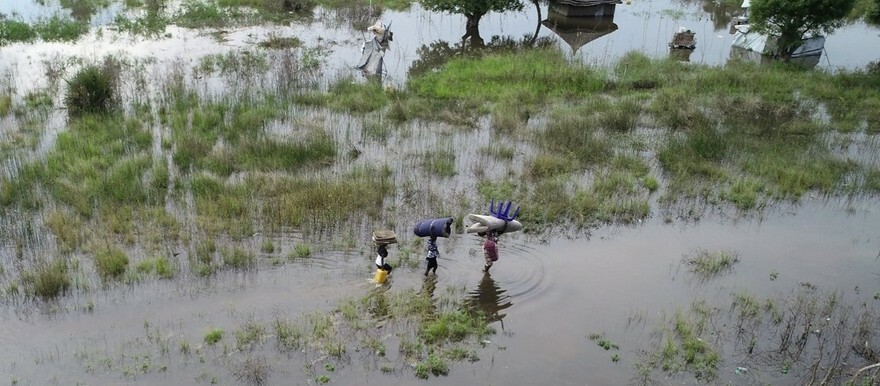A wave of heavy rains and floods hit some villages in Cueibet County of South Sudan’s Lakes State, submerging houses and damaging crops.
Speaking to Radio Tamazuj on Sunday, John Chiech Dut, a farmer in Theem-Dit village, said: “I am affected because I cultivated more than 260 fedans in my place, especially in Theem-Dit village. That area is affected by the heavy rains.”
“Most of the farmers who went to cultivate on that side have been affected because there were some farmers who went there with tractors. So our crops have been damaged by the floods. Nobody even has harvested anything,” he added.
Madol, another farmer in Jakbil village, said over 460 houses were submerged in floodwaters and that the residents in the area have moved to the county headquarters. He pointed out that the displaced families are currently sheltered in shops and government offices.
“The floodwaters are not flowing. The road could not allow the water to pass because there is no water outlets and channels and no culvert being made by the road construction company,” he said.
For his part, the acting minister of information in Lakes State, William Koji Kirjok, confirmed that the heavy rains and floods in Cueibet and Wulu counties have caused massive displacement.
“The South Sudan Relief and Rehabilitation Commission, humanitarian partners, and the state government will take the lead. There will be an assessment to get accurate reports from the humanitarian partners together with the relief commission, and this is how it will work to assess the damage caused by floods and to know the accurate number of displaced people,” he said.
In March this year, UNHCR, the UN Refugee Agency, warned that prolonged flooding and displacement in South Sudan were expected to worsen when the rainy season begins.
South Sudan had its worst flooding on record in 2021. More than 835,000 people were impacted, according to the UN Office for Humanitarian Affairs.




